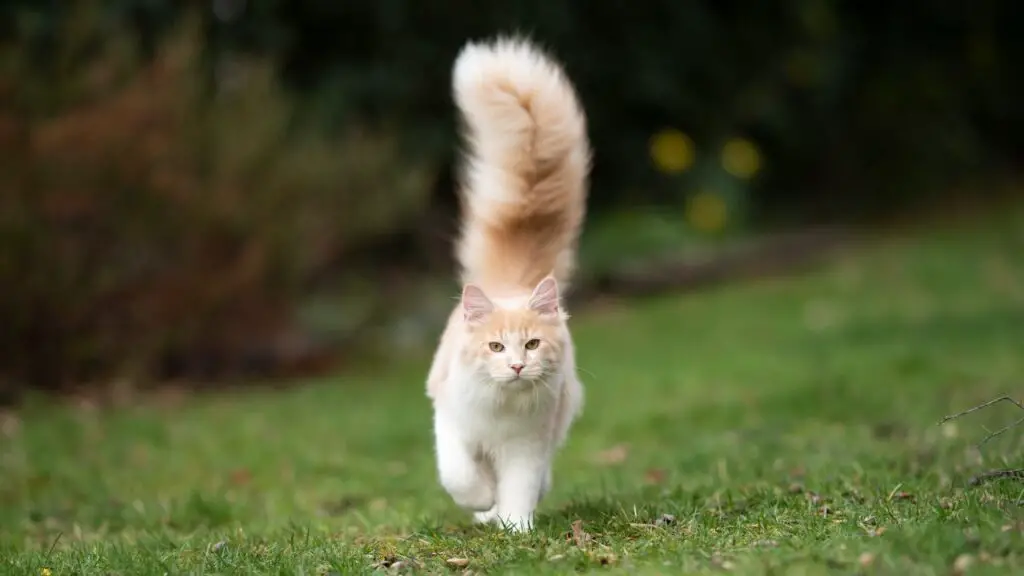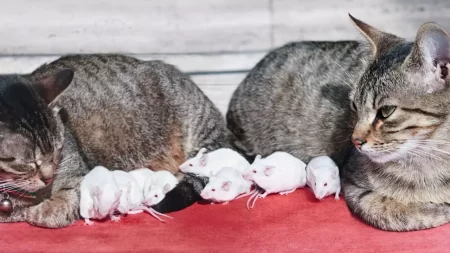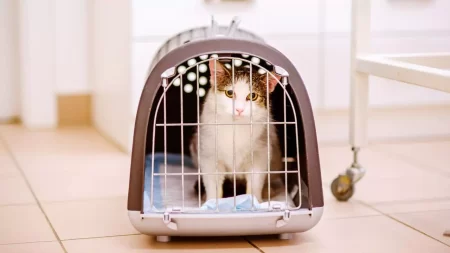Cats do know their tail is theirs because it is an extension of their spine, which has many nerve endings.
Their tail is sensitive to touch and pain. They use their tail to control their movements and balance.
If their tail is injured, they may have problems with urination and defecation.
Cats can also communicate with their tail by wagging, flicking, slapping, or curling it. Their tail movements can indicate their mood, intention, or arousal.
For example, a cat may flick its tail to invite you to play or slap its tail to show annoyance.
Some cats may chase their tail if its motion activates their prey drive. This is more common in young animals who have a strong instinct to hunt and play.
However, this behavior can also be a sign of boredom, stress, or a medical issue. If your cat chases its tail excessively or aggressively, you may want to consult a veterinarian.
Can cats distinguish their own tail from other cats’ tails?
Cats can also distinguish their own tail from other cats’ tails by using their sense of smell.
Cats have scent glands on their tail that produce a unique odor that identifies them as individuals. They can use their tail to swap scents with other cats or humans by wrapping them around them. This is a sign of affection and social bonding.
Sometimes, cats may chase their own tail or another cat’s tail if its motion activates their prey drive.
This is more common in young cats who have a strong instinct to hunt and play.
What sensory cues do cats use to identify their tail as their own?
Cats use mainly two sensory cues to identify their tail as their own: touch and smell.
Touch: Cats can feel their tail because it has many nerve endings that transmit sensory information to the brain.
Cats can also control their tail movements by using muscles, tendons, and ligaments that connect the tail bones to the spine.
Cats use their tail for balance, communication, and expression. They can sense when their tail touches an object or changes temperature.
They can also feel pain or discomfort if their tail is injured or irritated.
Smell: Cats have scent glands on their tail that produce a unique odor that identifies them as individuals.
Cats can swap scents with other cats or humans by wrapping their tail around them.
This is a sign of affection and social bonding. Cats can also smell other cats’ tails and recognize them by their scent.
Do cats use their tail as a tool for communication or self-expression?
Cats use their tail as a tool for both communication and self-expression. They can convey their emotions, moods, intentions, and preferences by using different tail positions and movements.
They can also use their tail to interact with other cats and humans by wrapping it around them, exposing their anal region, or swapping scents.
Some examples of cat tail language are:
- A tail held high with a question mark curve at the tip indicates friendliness and curiosity.
- A tail being used to wrap around another creature indicates affection and social bonding.
- A tail held low or tucked between the legs indicates fear or submission.
- A tail thrashing or slapping indicates irritation or anger.
- A tail twitching at the end indicates excitement or frustration.
- A tail swishing slowly from side to side indicates focus or interest.
- A tail quivering indicates happiness or excitement.
Cats can also combine their tail language with other body signals, such as ear position, eye contact, vocalization, and posture, to create more complex messages.
By paying attention to your cat’s tail language, you can better understand your cat and improve your relationship with them.
Do cats experience a sense of loss or grief if their tail is injured or amputated?
Cats use their tail for balance, communication, and expression, but they can live without tails.
Injured or amputated tails can hinder a cat’s ability to perform certain functions, requiring them to adapt to its altered circumstances.
They may also feel pain or discomfort from the injury or surgery.







